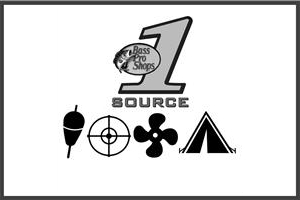
 Teaching kids the fundamentals of what fishing gear to use, how to use it and how to take care of it takes time and patience. In this segment, I’ve outlined my top five all-time must-haves to get that little angler on the water and catching fish.
Teaching kids the fundamentals of what fishing gear to use, how to use it and how to take care of it takes time and patience. In this segment, I’ve outlined my top five all-time must-haves to get that little angler on the water and catching fish.
- Rods & Reel Combo: There are a few ways to go for reels. There are Drop Lines, Spin-Casters and Open-Faced Spinning reels. These are the easiest to use. They only take a few minutes to get the hang of.
You can buy "Combos," which simply mean you get a rod with the reel.
For rods, I would recommend a rod that has some stiffness to it so it’s not too "whippy," like a wet noodle. This will help in getting fish out of weeds and also helps in setting the hook with less effort. Also, the rod length is important too. A rod for an adult will be too long for a child to handle easily (at first). You want a rod that is right around the height of the child. Take it out in the back yard, tie a washer (or something with a little weight to it) to the end of the line, and practice casting. This will save a lot of time when you get to the water. - Fishing Line: One thing I like to do with kids is use "Super Lines," which are braided or fuse-bonded line. I recommend brands like Bass Pro Shops XPS Braid, Power Pro Braid and Berkely FireLine. I like getting the kids 10# test.
One reason I like using these types of lines is that they have no “memory.” In other words, they won't get all twisted up and create loops or “bird’s nests.” Nothing takes the fun out of fishing (for everyone) more than constantly having to un-twist line.
Another nice thing about these lines is that they're super sensitive. You can really feel what's happening on the other end! They also last a really long time. - Terminal Tackle: This includes hooks, sinkers (be sure to check your state's local "Lead Law") and so on.
If you're going to be going for pan fish, remember these fish have small mouths, so don't go out and by a pack of 4/0 hooks. I suggest some small number 1 or 2 Circle (or Octopus) hooks. These hooks are great because you don't really have to "set" the hook with them. They seem to automatically catch the corner of the fish’s mouth with some line tension.
Note: I recommend crushing down the barb with some needle-nose pliers. This will make removing the hooks so much easier and will do much less damage to the fish. - Bait/Lures: If you're going to use live bait, you can't ever go wrong with earthworms. (Small bait fish like shiners can require some work to keep them alive and frisky, so worms are usually my choice!)
Part of the fun is letting the kids dig them up. If they (or you) aren't into that, you can buy a dozen worms pretty easily. This is probably the best way to go if you're after pan fish like sunfish, bluegill, perch, etc. If you don't use them all, you can either put them in the refrigerator (don't tell Mom!) if you're going to be fishing again within a day or so, or simply let the "Lucky Ones" go free (that's fun for the kids, too!).
If you want to try some artificial lures like the pros on TV, then I would suggest Stick Baits (a.k.a. Senkos). These little chunks of plastic that look like markers are incredible fish catchers for larger fish like bass. They don’t really require you to “work” the bait too much, so they are ideal for less-skilled anglers.
Top water baits are really exciting as well. Cast-and-reel baits on top include Buzz Baits, Jitterbugs, Torpedoes, Pop R's, and the list goes on. It’s really exciting to actually see the fish strike the lure!
Note: One thing to consider is that artificial lures take a little more skill to use properly, so I recommend starting with live bait at first. - Bobbers: Bobbers are a must for live bait. The kids get that visual connection to the fish, which will allow them to learn how to "feel" the fish on the line.
They also allow you to set the height off the bottom the worm will be. Pan fish are "geared" toward looking up for their food (mostly). So you want to set the height the worm will be at a few inches under the surface. It’s very easy to adjust if need be. Experiment with that.
They are various types and sizes of bobbers. I recommend the ball-shaped ones in a smaller size for fishing for pan fish. It will be a lot easier for a smaller fish to pull it under, giving the young angler a good opportunity to get the hook "set.”
Now you’re ready to go fishin’! Check out my next blog, “Taking Kids Fishing, Part 4: Let’s Go Fishin’.”
Written by Keith Wilson
- 4941 views

